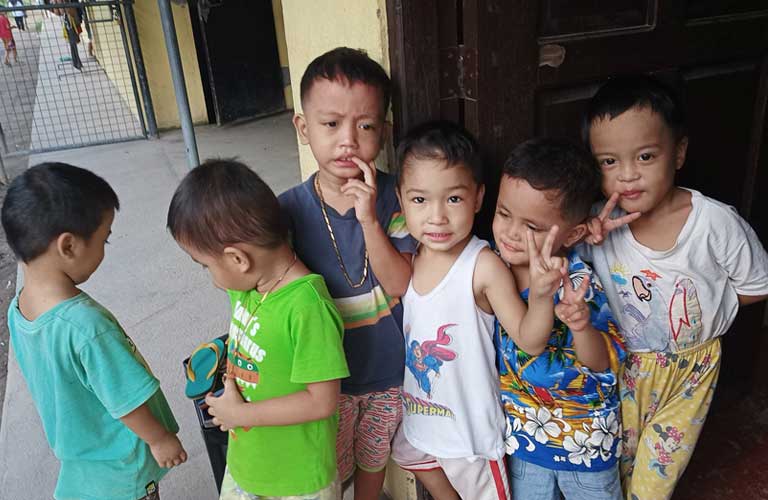The number of orphans in the Philippines is now estimated to be over 2,000,000!
The following four factors are fundamental to understanding the orphan crisis in the Philippines. Although there is not much we can do about natural disasters, we are convinced we can move the needle forward on the other three.

Natural Disasters
The Philippines is located along the Ring of Fire or typhoon belt. Because of this, the country has suffered from deadly typhoons, earthquakes, volcano eruptions, and other natural disasters. Annually, approximately 80 typhoons develop above tropical waters, of which 19 enter the Philippine region, and about six to nine make landfall.
The Philippines has been named the country most exposed to tropical storms. Violent tropical storms can generate up to 10 times as much energy as the Hiroshima atomic bomb. Such drastic weather destroys homes, villages, and families. Often, the survivors are the children, minus their parents. Natural disasters often give birth to orphans.
Teen/Preteen Pregnancy
Lack Of Education
The Philippines’ Department of Education, Culture and Sports’ mission is to provide quality, basic education that is equitably accessible to all…” And yet, CNN Philippines reported not too long ago that six in ten families in 2016 and five in ten families in 2017 lacked access to basic education.
There is a wide disparity among different social groups in educational achievement, as in most countries. The wealthy have better access to education than the poor. And since around 25% of the population lives below the poverty line, many Filipinos, while being literate, find it hard to get ahead in life. – which leads us to the last condition contributing to the orphan crisis in the Philippines.
Poverty
Widespread corruption in Filipino politics and business prevents social mobility and growth. Power is concentrated among influential families and connected individuals, leaving poor people with few opportunities to better themselves. The Rural Poverty Portal reports that half of the poor in the Philippines live in rural areas. The poorest of the poor are the indigenous, landless laborers, fishermen, small farmers, mountain folk, and women. Deforestation, depleted fisheries, and unproductive farmland are major problems for these people. Illiteracy and lack of educational opportunities are also critical issues.
Not-So-Fun Fact
The Philippines IMPORTS much of its rice. Poor rice farmers can’t catch a break.
Amidst the daunting reality of over 2,000,000 orphans in the Philippines, the intertwined factors of natural disasters, teen pregnancies, education gaps, and poverty demand our action.
Let’s stand together to be the change these children need, forging a path toward a more hopeful future for them.






